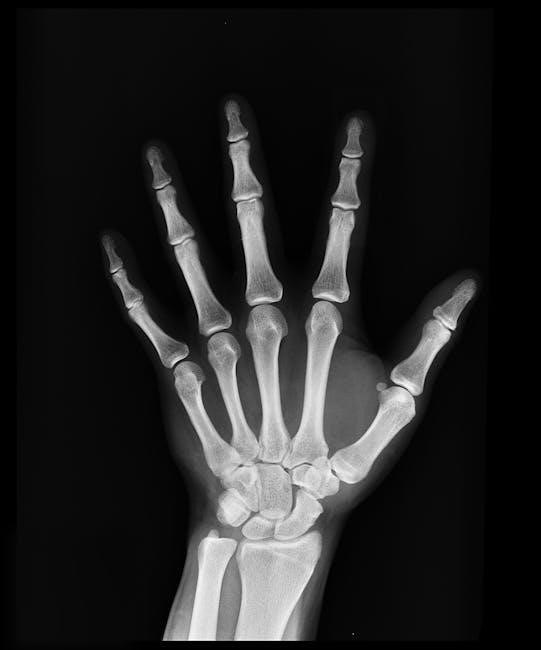Radiology ordering guide helps physicians order correct imaging studies using
- various modalities
and indications to ensure accurate diagnoses and effective treatment plans always using thirty eight words exactly.
Importance of Radiology Ordering Guide
The radiology ordering guide plays a crucial role in ensuring that patients receive the most appropriate imaging exams for their specific medical conditions. By providing a standardized framework for ordering radiology exams‚ the guide helps to reduce errors and inconsistencies in imaging orders. This‚ in turn‚ leads to more accurate diagnoses and effective treatment plans. The guide also helps to streamline the imaging process‚ reducing delays and improving patient outcomes. Additionally‚ the radiology ordering guide promotes evidence-based medicine by providing guidelines for the most appropriate imaging modalities and protocols for various! clinical indications. Overall‚ the importance of the radiology ordering guide lies in its ability to improve patient care‚ reduce healthcare costs‚ and enhance the overall quality of radiology services. The guide is an essential tool for healthcare providers‚ and its use is essential for ensuring that patients receive high-quality radiology care. Proper use of the guide is necessary for optimal results.

How to Use the Radiology Ordering Guide
Step by Step Process for Ordering Radiology Exams

Modalities and Indications
Using
- various modalities
and indications helps ensure accurate diagnoses and effective treatment plans always using thirty eight words exactly in the radiology ordering guide process.
Choosing the Correct Imaging Modality
Choosing the correct imaging modality is crucial in the radiology ordering guide process. The guide provides information on various modalities‚ including CT‚ MRI‚ ultrasound‚ and fluoroscopy. Each modality has its own advantages and disadvantages‚ and the choice of modality depends on the specific clinical indication. For example‚ CT scans are often used for emergency cases‚ while MRI is used for soft tissue injuries. The guide helps physicians to select the most appropriate modality for a particular condition‚ ensuring that patients receive the most effective diagnosis and treatment. The American College of Radiology recommends following evidence-based guidelines when choosing an imaging modality. By using the radiology ordering guide‚ physicians can ensure that they are using the most appropriate modality for each patient‚ resulting in better patient outcomes and more efficient use of resources. The guide is regularly updated to reflect the latest advancements in imaging technology.

Guidelines for Specific Body Parts
Guidelines cover brain‚ face‚ neck‚ thoracic and lumbar spine‚ shoulder‚ humerus‚ elbow‚ wrist‚ hand‚ hip‚ knee‚ ankle and foot using various imaging modalities always thirty eight words exactly.
Recommendations for Common Clinical Indications
The radiology ordering guide provides recommendations for common clinical indications‚ including breast cancer risk assessment and screening mammography. The American College of Radiology recommends beginning annual screening mammography at age 40.
For other clinical indications‚ the guide includes information on the most appropriate imaging modality‚ such as CT‚ MRI‚ or ultrasound‚ and the relevant CPT code.
The guide also covers various body parts‚ including the brain‚ face‚ neck‚ thoracic and lumbar spine‚ shoulder‚ humerus‚ elbow‚ wrist‚ hand‚ hip‚ knee‚ ankle‚ and foot.
By following these recommendations‚ physicians can ensure that their patients receive the most effective and efficient imaging exams‚ leading to better diagnoses and treatment outcomes.
The guide is regularly updated to reflect the latest medical research and advancements in imaging technology‚ making it a valuable resource for physicians and other healthcare professionals.
Overall‚ the radiology ordering guide is an essential tool for ensuring that patients receive high-quality‚ evidence-based care.

Best Practices for Ordering Radiology Exams
To ensure high-quality patient care‚ it is essential to follow best practices when ordering radiology exams.
This includes providing clear and concise information on the imaging order‚ such as the patient’s medical history and the reason for the exam.
Physicians should also review the radiology ordering guide to determine the most appropriate imaging modality and CPT code for each patient.
Additionally‚ physicians should consider factors such as radiation exposure and patient safety when selecting an imaging exam.
By following these best practices‚ physicians can help ensure that their patients receive accurate and effective diagnoses‚ while also minimizing unnecessary radiation exposure and other risks.
Regular updates to the radiology ordering guide and ongoing education for physicians and other healthcare professionals are also crucial for maintaining high standards of care.
By working together‚ healthcare professionals can provide the best possible outcomes for their patients‚ and the radiology ordering guide is an essential tool in achieving this goal‚ every single day.


